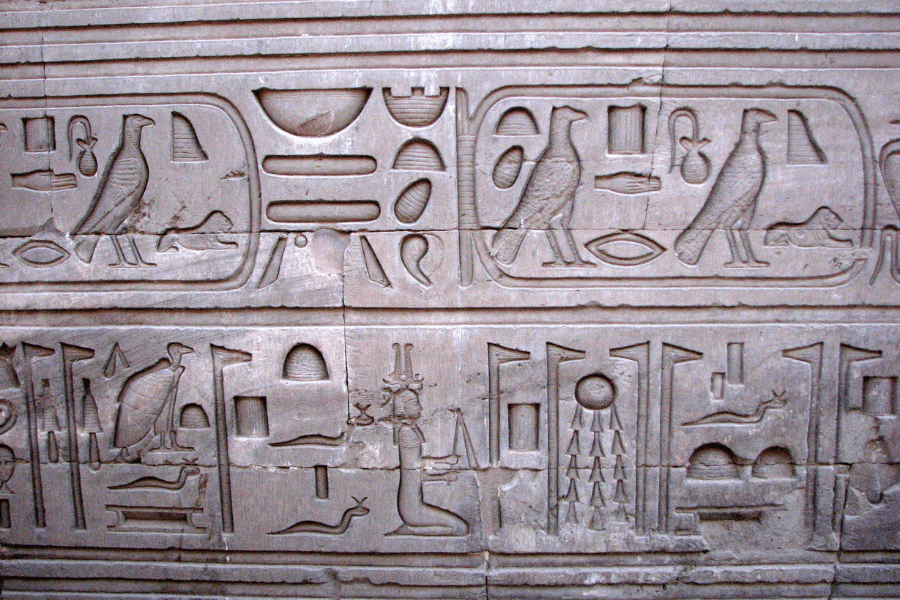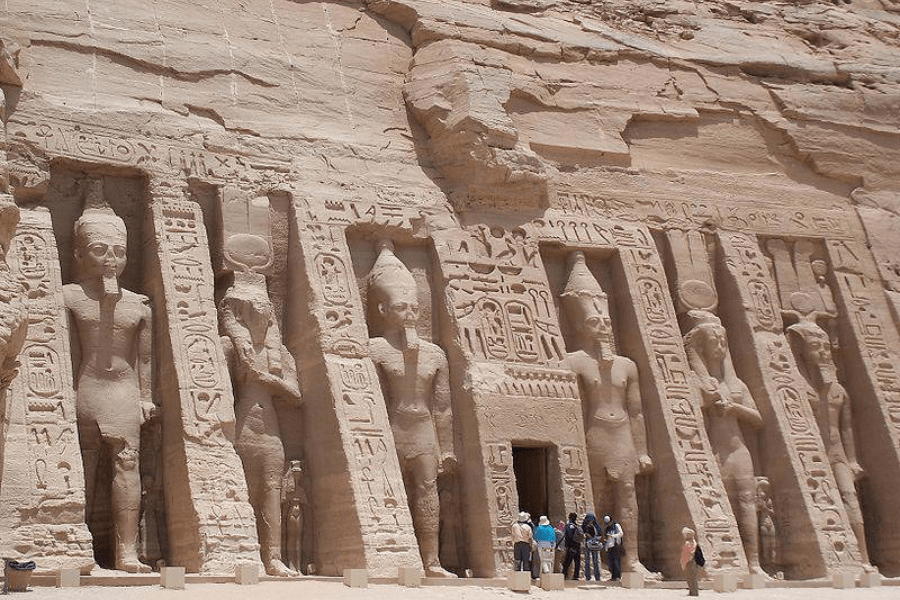Ancient Egyptian art
Ancient Egyptian art, which was avant-garde for its time, includes artistic expressions from Prehistoric Egypt through the Christianization of Roman Egypt, spanning the period from the 6th millennium BC to the 4th century AD. Examples of this conservative tradition’s remnants can be found in tombs and statues, providing insight into the beliefs of the ancient Egyptians regarding their afterlife.
Egyptian art served the people in power as a powerful propaganda tool that perpetuated the existing societal framework, reflecting civilization, culture, and religious beliefs. As a result, the history of ancient Egyptian art paintings spans thousands of years and reflects individual artistic expression, which was considered a minor tradition since art aimed to maintain order on a wider and cosmic scale.
During his reign (1353–36 BC) as the 18th dynasty’s Amenhotep IV, also known as Akhenaton, invented the innovative Amarna style of Egyptian art.
Ancient Egyptian artwork
A fascinating look at life in ancient Egypt
Egypt’s arid atmosphere has meant that many ancient Egyptian paintings have generally only been found and preserved in temples and tombs. Usually, the paintings were made to provide the deceased a happy afterlife. A common topic was the voyage through the afterlife, where the departed is introduced to the gods of the underworld, such as Osiris, by guardian deities. Certain paintings on tombs represented the deceased’s life activities, which they hoped to carry on forever.
The primary colors used in Egyptian paintings were red, blue, green, gold, black, and yellow. The paintings depicted scenes of hunting, fishing, and landscape backgrounds of reeds and water. The subjects of the paintings were alive and wished to continue living forever. For example, the artwork to the right represents the head from a profile view and the body from a frontal view.
Egyptian paintings usually show an animal or human from both the front and the side at the same time. For example, the artwork on the right shows the torso from a frontal view and the head in profile. Egyptian paintings mostly used the hues blue, crimson, gold, green, yellow, and black. Paintings that show hunting or fishing situations frequently have lively, up-close settings with water and reeds. In general, Egyptian landscape paintings lacked a sense of depth and visual perspective. Rather of indicating where they are, the figures’ sizes convey their significance.

Ancient Egyptian art, a wall with ancient drawings. Egypt Tours Group.
Paintings from ancient Egypt
Using brushes to get to the afterlife
The main uses of ancient Egyptian paintings were for religious and funeral purposes. They depicted both everyday life and their ideas on the afterlife journey in their artworks.
Similar to modern brushes, the ancient Egyptians utilized bundles of plant materials, such as reeds and grasses, linked together with a string.
While other images similar to this one were created by combining the colored powder with egg yolks, the paint was created by combining colored powder with beeswax. Egg tempera paint is the name given to this kind. This kind of paint was also employed by the ancient Egyptians.
The six primary color groups that constituted the ancient Egyptian color palette were yellow (khenet or knit), white (hedge or sheep), red (Desher), blue (dirty or khesbedj), green (adj), and black (Kem).
Ancient Egyptian paintings
The most well-known artwork
Figures were shown from a two-dimensional perspective in ancient Egyptian art. Individuals were depicted standing sideways, with their shoulders and eyes turned forward but their limbs, face, and waist in profile. Rather of aiming for realism, this style sought to capture the most representative features of each individual.
depictions of the mummified deceased carrying out daily activities or achieving actions, as well as depictions of the deceased presenting gifts to a god (possibly Isis or Osiris), were typically seen in tombs. In addition, there were pictures of gods, swords, snakes, and scorpions to ward off evil spirits and safeguard the tomb.
The paintings found in Tutankhamun’s tomb are the most well-known. Unique paintings can also be found at Nefertari’s tomb and the Hatshepsut temple.

Ancient Egyptian art on Nefertari temple. Egypt Tours Group.
Paintings on papyrus from ancient Egypt
Papyrus: The art historical memory
The pith within the stalk of a papyrus plant is cut into tiny strips and used to make papyrus. The strips were probably arranged in a double-layered crisscross pattern, compressed, and allowed to dry into papyrus paper.
Many Egyptian papyrus paintings were created on Egyptian papyrus. Papyrus was frequently utilized as a backdrop for tales about death because it represented a link to both life and death.
An underwater relief method used by the ancient Egyptians performed particularly well in intense sunshine. The primary figures in the reliefs adhered to the same painting conventions. Papyrus, a substance used for writing and painting, was exported by the ancient Egyptians to numerous ancient states. The Dead Book Famously drawn papyrus scroll Ani was created to help the deceased find their way in the afterlife.

Ancient Egyptian art, Dendera temple. Egypt Tours Group.
Authentic Egyptian artwork
Historical paintings
The walls of tombs and temples are covered in authentic Egyptian artwork. The amazing paintings depict everyday life, the afterlife, and all of the ancient Egyptian beliefs.
Menna’s Tomb (1400 BCE)
Theban Necropolis in Egypt is home to this tomb, which is painted with depictions of his life and afterlife. Within the Theban necropolis, it is one of the most frequented and well-preserved tombs of the elite from the 18th Dynasty.
Seti I’s tomb (1279 BCE)
Not only is it one of the largest and deepest tombs in the Valley of the Kings, but it is also one of the most ornamented in the entire area. Of its seventeen chambers and side rooms, all but two have well-preserved reliefs.
The entering corridors (Corridors B–D) are richly ornamented with a list of Set’s royal titles and epithets as well as Pharaonic symbols, such as those of Ma’at. The Opening of the Mouth Ceremony, which adorns one of the back chambers, symbolizes the Egyptian idea that a magical religious ritual would open the mummy’s neck and lungs, enabling it to breathe in the hereafter.





